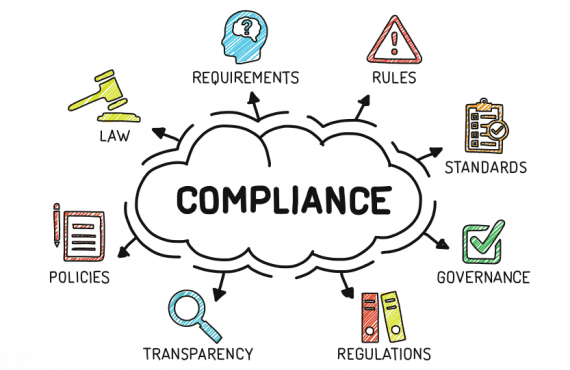The government’s primary civil tool for addressing healthcare fraud is the False Claims Act (FCA). Based on the information it gathers in an FCA case, the Office of Inspector General (OIG) assesses the future trustworthiness of the settling parties for purposes of deciding whether to exclude them from the Federal healthcare programs or to take other action.
FCA Settlements on the Risk Spectrum for FY 2021 Q1-Q2:
- 7 Exclusions (Highest Risk)
- 0 Heightened Scrutiny (High Risk)
- 14 Corporate Integrity Agreements (CIA’s) (Medium Risk)
- 66 No Further Actions (Lower Risk)
- 5 Self-Disclosures (Low Risk)
The OIG’s assessment of the risk posed by a FCA defendant may be relevant to various stakeholders, including patients, family members, and healthcare industry professionals. The OIG makes public the information about where an FCA defendant falls on the risk spectrum.
The OIG applies published criteria to assess future risk and places each party to an FCA settlement into one of five categories on a risk spectrum. OIG uses its exclusion authority differently for parties in each category. The OIG bases its assessment on the information it has reviewed in the context of the resolved FCA case and does not reflect a comprehensive review of the party.
Description of the Risk Categories Includes:
- Highest Risk-Exclusion: Parties that the OIG determines present the highest risk of fraud will be excluded from Federal healthcare programs to protect those programs and their beneficiaries. Excluded individuals and entities are listed in the OIG’s exclusion database.
- High Risk-Heightened Scrutiny: Parties are in the High Risk category because they pose a significant risk to Federal healthcare programs and beneficiaries. This is because, although OIG determined that these parties needed additional oversight, they refused to enter CIAs sufficient to protect Federal healthcare programs.
- Medium Risk-CIA’s: Healthcare providers and other entities in the Medium Risk category have signed CIAs with the OIG to settle investigations involving Federal healthcare programs. Under these agreements, parties promise to fulfill various obligations in exchange for continuing to participate in the programs.
- Lower Risk–No Further Action: TheOIG sometimes concludes that parties present a relatively low risk to Federal healthcare programs. As a result, OIG is not seeking to exclude them from those programs or require a CIA. OIG cases against these parties are closed without evaluating the effectiveness of any efforts the parties have made to ensure future compliance with Federal healthcare program requirements.
- Low Risk–Self Disclosure: A party may disclose evidence of potential fraud related to Federal healthcare programs to the OIG. The OIG believes that doing so in good faith and cooperating with the OIG’s review and resolution process generally demonstrates that the party has an effective compliance program. The OIG works to resolve such cases faster, for lower settlement amounts, and with a release from potential exclusion, with no CIA or other requirements.
The OIG’s criteria for implementing section 1128 (b)(7) exclusion authority can be accessed at: 1128(b)(7) Exclusion Criteria (hhs.gov)
OIG’s Exclusion Database can be accessed at: Search the Exclusions Database | Office of Inspector General (hhs.gov)
Parties that are in the High-Risk-Heightened Scrutiny category that have reached settlements finalized on October 1, 2018 or later can be accessed at: High Risk | Evaluating Fraud Risk | Office of Inspector General | U.S. Department of Health and Human Services (hhs.gov)
To learn more about the OIG’s self-disclosure protocol, access it at: Provider Self-Disclosure Protocol | Compliance | Office of Inspector General | U.S. Department of Health and Human Services (hhs.gov)
Issue:
It is extremely important that all members of the healthcare team are aware of what may be considered a false claim or a kickback. Ensure that all staff are aware that these violations can occur whether they are intentional or not intentional. Failure to promptly report a false claim or kickback can result in lawsuits, fines, and other sanctions. Additional information is available in the Med-Net Corporate Compliance and Ethics Manual, Chapter 2 Financial Integrity, CP 2.3 General Legal Duties and Antitrust Laws.
Discussion Points:
- Review policies and procedures for preventing and reporting a false claim or anti-kickback statute violations. Update your policies and procedures as needed.
- Train all staff on the False Claims Act and Anti-Kickback Statute and what can be considered a false claim or kickback. Include information on how to report concerns and suspected violations, and that prompt reporting is mandatory. Document that the trainings occurred and place in each employee’s education file.
- Periodically audit staff to ensure that they are aware of what should be done if they suspect a false claim or illegal kickback has occurred, whether intentionally or unintentionally. Conduct audits of documentation and billing routinely to prevent and detect errors before they progress to a false claim.













































































